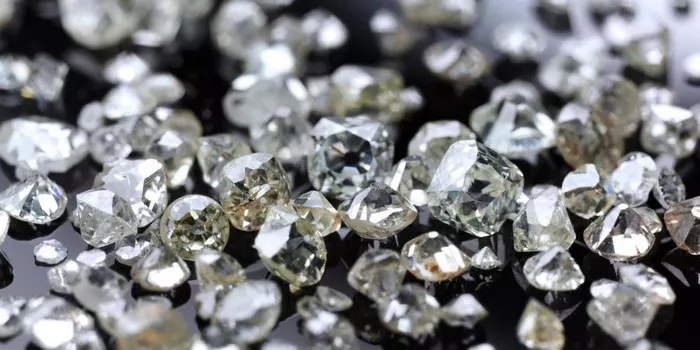Diamonds have long been prized for their beauty and rarity, making them one of the most sought-after gemstones in the world. Whether you’re buying, selling, or simply curious about the authenticity of a diamond, being able to verify its identity without relying on specialized equipment can be invaluable. While diamond testers are commonly used for this purpose, there are several reliable methods that can be employed using simple tools and techniques. This guide aims to equip you with the knowledge to confidently test diamonds without a diamond tester.
Understanding Diamond Characteristics
Before delving into testing methods, it’s crucial to understand the unique properties that distinguish diamonds from other gemstones. Diamonds are primarily composed of carbon and are formed under immense pressure and heat deep within the Earth’s mantle. Their structure gives them several distinctive features:
1. Hardness: Diamonds are the hardest natural substance known, scoring a perfect 10 on the Mohs scale of hardness.
2. Density: Diamonds have a high density, which affects how they interact with light and how they feel compared to imitations.
3. Thermal Conductivity: Diamonds conduct heat exceptionally well, a property that can be utilized in testing.
4. Refraction and Brilliance: Diamonds have a high refractive index, which contributes to their brilliance and sparkle.
5. Fluorescence: Some diamonds exhibit fluorescence under ultraviolet light, emitting a glow that can vary in color.
Methods for Testing Diamonds Without a Diamond Tester
Now, let’s explore various methods you can use to verify if a gemstone is a diamond without the use of a diamond tester:
1. Visual Inspection
Visual examination can provide initial clues about whether a stone might be a diamond. Consider the following factors:
Brilliance and Sparkle: Diamonds have a unique sparkle due to their high refractive index. They disperse light into spectral colors, known as fire, which is highly noticeable in quality diamonds.
Inclusions: Natural diamonds often have inclusions, which are internal flaws or imperfections. These can appear as tiny crystals, clouds, or feathers within the stone. Some imitations might have artificial inclusions, but these are usually more perfect and regular.
Mounting and Setting: If the diamond is already set in jewelry, examine the setting. High-quality diamonds are often set in high-quality metals like platinum or high-grade gold. Poor craftsmanship or inexpensive settings may indicate a lower-quality stone.
2. Fog Test
This simple test takes advantage of the thermal conductivity of diamonds:
- Hold the stone in front of your mouth and fog it with your breath, just like you would fog a mirror.
- Diamonds disperse heat quickly, so the fog should clear almost immediately. If the fog lingers for several seconds, it’s likely not a diamond.
Note: This test is more effective when the stone is at room temperature.
See Also: Which Country Produces the Best Yellow Sapphire?
3. Water Test
The water test utilizes the high density of diamonds:
- Fill a drinking glass with water nearly to the brim.
- Carefully drop the stone into the water.
- A diamond will sink to the bottom due to its high density. Other gemstones or imitations may float or sink slowly.
Note: This test is most effective when comparing stones of similar size.
4. UV Light Test
Some diamonds exhibit fluorescence under ultraviolet (UV) light:
- Use a handheld UV light or a UV lamp to observe the stone in a dark room.
- Genuine diamonds may exhibit a blue fluorescence, although this can vary.
- Note that not all diamonds fluoresce, so the lack of fluorescence does not necessarily indicate a fake.
5. Heat Conductivity Test
This test exploits diamonds’ exceptional thermal conductivity:
- Hold the stone with tweezers or pliers.
- Briefly heat the diamond with a lighter or a match.
- Immediately drop the stone into a glass of cold water.
- A genuine diamond will not be affected by the sudden temperature change and should remain intact. Other stones may crack or shatter due to thermal shock.
6. Magnification and Loupe Examination
Using a jeweler’s loupe or a microscope can help examine the stone more closely:
- Look for internal characteristics such as inclusions, which are often indicative of natural diamonds.
- Check for facet edges: diamonds are typically cut with precise facet edges, while imitations may have smoother or rounded edges.
7. Paper Test
This test evaluates a diamond’s hardness:
- Place a piece of paper flat on a surface.
- Attempt to scratch the paper with the stone in question.
- Diamonds are extremely hard and should leave a visible scratch on the paper. Softer gemstones will not scratch the paper.
8. Professional Appraisal
If you’re still uncertain about the authenticity of a diamond, consider seeking a professional appraisal from a certified gemologist or jeweler. They have the expertise and equipment to accurately identify gemstones and assess their quality.
Conclusion
Testing diamonds without a diamond tester requires careful observation and the application of basic scientific principles. By understanding the unique properties of diamonds and employing these testing methods, you can make a more informed decision when buying or evaluating diamonds. Remember that while these tests can provide valuable insights, they are not foolproof, and for high-value diamonds, consulting a professional is always recommended. With practice and experience, you can become more confident in identifying diamonds and distinguishing them from imitations. Happy testing!
By following this guide, you’ll be well-equipped to confidently identify diamonds and make informed decisions based on their authenticity and quality, even without a diamond tester.


